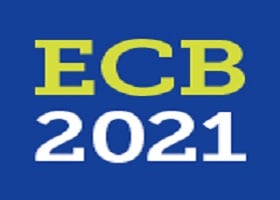Selected Papers in the 1st International Electronic Conference on Biomedicine (ECB 2021)
A special issue of Biomedicines (ISSN 2227-9059). This special issue belongs to the section "Molecular and Translational Medicine".
Deadline for manuscript submissions: closed (31 December 2021) | Viewed by 30440
Special Issue Editors
2. Vascular Vision Pharmaceuticals Co., Rensselaer Polytechnic Park, Troy, NY 12180, USA
Interests: pharmaceuticals; biopharmaceuticals and diagnostics; nanomedicine; cardiovascular diseases; neurological disorders; hematology and oncology; biosimilar and nanosimilar; angiogenesis; inflammation; thrombosis; integrin and cell adhesion molecules; target identification; molecular mechanisms and signaling pathways; preclinical; clinical; marketing and post marketing studies; regulatory and ethical issues
Special Issues, Collections and Topics in MDPI journals
Interests: oncolytic virus; cancer immunotherapy; oncolytic vaccine; therapeutic cancer vaccine; viro-immunotherapy; immunovirotherapy; gene therapy; vaccinia virus
Special Issues, Collections and Topics in MDPI journals
2. Faculté de Pharmacie, 4 Avenue de l'Observatoire, 75006 Paris, France
Interests: interface between signal transduction and cancer with a focus on the alternative NF-kappaB signaling pathway, how it is regulated, and its contributions towards tumor development and resistance to conventional cancer therapies
Special Issues, Collections and Topics in MDPI journals
Interests: autophagy and protein metabolism in cancer and in neurodegeneration; epigenetics in cancer; nutraceuticals and probiotics in cancer and infectious diseases
Special Issues, Collections and Topics in MDPI journals
Interests: neuroprotective therapies in neurotrauma; neuroregeneration in spinal cord injury; new, improved models of cancer and other human diseases
Interests: Neuroscience, GPCR, breast cancer and Pharmacology
Special Issues, Collections and Topics in MDPI journals
Interests: oncolytic virus; cancer immunotherapy; oncolytic vaccine; therapeutic cancer vaccine; viro-immunotherapy; immunovirotherapy; gene therapy; vaccinia virus
Special Issues, Collections and Topics in MDPI journals
Interests: digital health; MultiOMICs; proteomics; disease prediction
Special Issues, Collections and Topics in MDPI journals
Interests: anticancer agents; metals in medicine; Medicinal bioinorganic chemistry; drug delivery; antibacterial agents; metal complexes
Interests: graphene nanoparticle; human organs; 3D scaffold; 3D bioprinter; stem cells; nanocomposite materials
Special Issues, Collections and Topics in MDPI journals
Interests: neurohormones; neuropeptides; tryptophan; kynurenine; psychiatry; neurology; depression; anxiety; dementia; cognition; antidepressant; translational research
Special Issues, Collections and Topics in MDPI journals
Special Issue Information
ECB 2021 will present the latest research related to all aspects of research on human health and disease, the discovery and characterisation of new therapeutic targets, therapeutic strategies, and research of naturally driven biomedicines, pharmaceuticals, and biopharmaceutical products.
Topics of interest include but are not limited to:
Nanomedicine and precision medicine
Nutraceuticals, nano nutraceuticals, and nano pharmaceuticals
Cancer therapeutics
Metal-based therapeutics in preclinical and clinical developments
Oncolytic virus-mediated immunotherapy
Neuroprotective therapies in spinal cord injury; the first and necessary step towards the cure
Exploring biomedicines in behavioral neurology and neuropsychiatry
Nanomaterials and its application in biomedicine, including drug/gene/vaccine delivery, imaging, medical devices, and surgical implants
Translational biomarkers in clinical biomedicine and precision medicine
G-protein-coupled receptor family
Microbiota, probiotics, and nutraceuticals: preventive and therapeutic potential
ECB 2021 is an electronic conference sponsored by Biomedicines. Participation is free of charge for authors and attendees. Accepted papers will be gathered in the proceedings of the conference. Selected extended versions of the papers will be published in a Special Issue of Biomedicines and undergo full peer review (ISSN 2227-9059; impact factor: 4.717 (2020)) with a 20% discount on the article processing charge. ECB 2021 offers you the opportunity to participate in this international, scholarly conference without the concerns or expenditure of travel—all you need is your computer and access to the internet. We would like to invite you to attend this conference and present your latest work.
Prof. Dr. Shaker Mousa
Dr. Zong Sheng Guo
Dr. Veronique Baud
Prof. Dr. Ciro Isidoro
Assoc. Pro Jacek M. Kwiecien
Dr. Ujendra Kumar
Dr. David L. Bartlett
Dr. Allan Stensballe
Dr. Muhammad Hanif
Prof. Dr. Alexander Seifalian
Dr. Masaru Tanaka
Guest Editors
Manuscript Submission Information
Manuscripts should be submitted online at www.mdpi.com by registering and logging in to this website. Once you are registered, click here to go to the submission form. Manuscripts can be submitted until the deadline. All submissions that pass pre-check are peer-reviewed. Accepted papers will be published continuously in the journal (as soon as accepted) and will be listed together on the special issue website. Research articles, review articles as well as short communications are invited. For planned papers, a title and short abstract (about 100 words) can be sent to the Editorial Office for announcement on this website.
Submitted manuscripts should not have been published previously, nor be under consideration for publication elsewhere (except conference proceedings papers). All manuscripts are thoroughly refereed through a single-blind peer-review process. A guide for authors and other relevant information for submission of manuscripts is available on the Instructions for Authors page. Biomedicines is an international peer-reviewed open access monthly journal published by MDPI.
Please visit the Instructions for Authors page before submitting a manuscript. The Article Processing Charge (APC) for publication in this open access journal is 2600 CHF (Swiss Francs). Submitted papers should be well formatted and use good English. Authors may use MDPI's English editing service prior to publication or during author revisions.
Keywords
- nanotechnology
- biotechnology
- nutraceuticals
- pharmaceuticals/biopharmaceuticals
- personalised medicines and emerging technologies in discovery and development
- nanomaterials
- graphene
- drug delivery
- vaccine delivery
- gene delivery
- nanoparticles
- stem cells
- cancer
- metabolism
- immunotherapy
- nanotechnology
- antidepressant
- analgesic
- antipsychotic
- neuroprotection
Benefits of Publishing in a Special Issue
- Ease of navigation: Grouping papers by topic helps scholars navigate broad scope journals more efficiently.
- Greater discoverability: Special Issues support the reach and impact of scientific research. Articles in Special Issues are more discoverable and cited more frequently.
- Expansion of research network: Special Issues facilitate connections among authors, fostering scientific collaborations.
- External promotion: Articles in Special Issues are often promoted through the journal's social media, increasing their visibility.
- e-Book format: Special Issues with more than 10 articles can be published as dedicated e-books, ensuring wide and rapid dissemination.
Further information on MDPI's Special Issue polices can be found here.
















